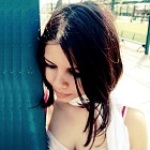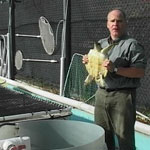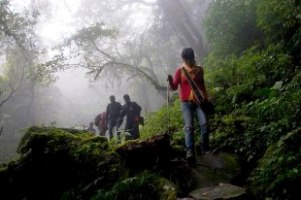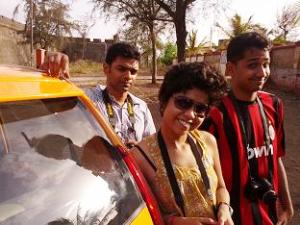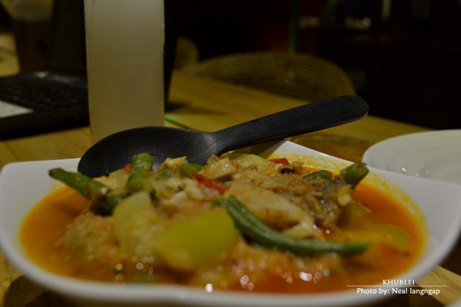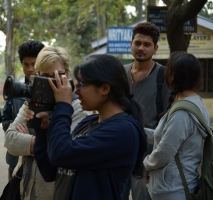They say when someone breaks your heart in Rome, the pieces scatter over the ruins and mingle with the dust of ages. If this is true, mine settled in the Colosseum’s arena – stamped by the visiting crowds and shadows of ancient gladiators.
Yet in this city, the most eternal in the world, the travesties of everyday life – even of heartbreak and loss – are placed into razor-sharp perspective. It humbles and helps to have ruins around you that stretch back over two thousand years. “Be brave,” they seem to whisper, “life is everything, and nothing. It goes on.”
The Uffizi, with its world-famous Renaissance art collection, could wait, I decided. It was time to look for some peace and quiet, a little pocket of calm amidst the souvenir shops and immigrant hawkers. I walked. On and on. Out of the city centre, by the river (which is neither shaded by trees nor dotted by welcoming benches), the old architecture falling away behind me. Florence turned more modern and charmless. Finally, aching, hot and tired, I decided on the next best thing – to watch the men’s Wimbledon finals. My quest for a sports bar (few and far between; nobody in Italy seems very interested in tennis) led me down an unobtrusive road to a “Scottish Pub”. Yes, it was tacky and sold over-priced Newcastle Brown Ale, but it was also cool, quiet and had a large flat screen TV tuned into Sky Sports.The two dudes in front of me were supporting Djokovic.
I was a Nadal fan.
The battle had begun.
Sometimes, all the art in the world cannot compare to a chilled beer, a plate of crisps and a good match.At the best of times, life is strange and indecipherable.
And at this point, I think it felt I hadn’t given Florence a fair enough chance.
We got talking, the guy who sat behind me, diplomatically cheering for the best man – and I told him I wasn’t sure I liked the city.
You could say he was the one who changed my mind.
Our late afternoon drive took us to a monastry about twenty minutes outside Florence – where the Tuscan sun suddenly had tall trees to dapple through, and fields to wash over. The building, glowing softly in the light, sat perched on a hill overlooking a tumble of wild slopes. It was empty. Unlisted in my guidebook. Untrampled by persistent enquiring footsteps. Apparently, there were no more than a handful of monks remaining and the pious, careful silence concurred – a silence broken only by our low conversation and the distant roar of traffic.
It would be safe to say I prefer Florence by night. The streets empty and echo only with your drunken attempts to recite poetry. You can time your steps to the cantos of Dante’s Divine Comedy rather than the traffic signals. You can speak at length on tristezza dei fiori (the sadness of flowers) sitting at a shaky wooden table by the river, and watch the lights flicker madly on the waters of the Arno. Around every corner you encounter art that’s darker, suddenly more Gothic than Classical.At Piazza della Signoria -
“Bacchus, Bacchus,” I exclaim, pointing to a bronze statue holding (what I think) is a bunch of grapes.
“No,” explains Giovanni, my newly found friend, “that’s Perseus with Medusa’s severed head in his hand.”
Ah. The tricks of light and shadow. Of good Italian wine.Yet my heart still belonged to Rome.
To anyone who cared to listen, I’ve explained it’s because one of my favourite lines in literature (from Arthur Miller’s “A View from the Bridge”) links me intrinsically to the city.
“I am inclined to notice the ruin in things, perhaps because I was born in Italy.”
Sometimes, I think I am also drawn toward hamartia. In people, relationships, stories.
The fatal flaw, the tragic error.
There are no great ruins without great pasts.
If somebody hurt my heart in Rome, it was also here that it was healed.
It’s an oddly religious story.
I trudged rather unwillingly to the Vatican City.
Let’s just say I’m not a fan of the pope.
Within the complex there are a large number of museums to wander through – each holding a vast array of religious paintings, Classical Roman sculpture and Egyptian artefacts. The Sistine Chapel is accessible via a number of smaller, lesser famous chapels – the idea is that you finally “arrive” at it. Inarguably, it is impressive. That is, if you can contemplate the famous “Creation of Man” fresco without your feet being trampled upon or your face thwacked by the itinerant flag of a tour group leader. Or if you can ignore the strangely aggressive guards who hiss at everyone to be quiet and tell you to step away from the walls. The colours are briskly fresh, as though painted yesterday, the figures gorgeous and startlingly life-like, and the symbolism overwhelmingly powerful – yet something is lost. The contemplation it demands remains elusive, hovering somewhere above the sea of heads and camera flashes.
Admittedly I haven’t been inside many churches but Saint Peter’s has to be the most beautiful. Unlike the Duomo with its green, pink and white marble façade, this structure is constructed from plain, earthy-yellow stone – allowing the sun and blue Roman skies to do the rest. Every sculpted pillar, doorway and window, stands out because of the surrounding simplicity.
I shan’t include a picture of the interior because nothing quite does it justice – least of all a shaky mobile phone image. Suffice to say, I walked in and gasped, something I’ve never done anywhere else. The structure soars and sings around you and above; it is nothing less than an intricate, delicate symphony.To the right of the entrance, almost lost in the shadows of the evening, was the Pieta. What strikes you first is how small it is. None of the prideful grace of David, the agony of the Prisoners. A woman and her dead son, achingly human and life-size. What makes Michelangelo a genius is Mary’s hands. One clasps at Jesus, the other is held open, giving him away to God, to man. Whether the story of Christ is true or not, we often forget that for his mother it was always a wrestle between the two – holding on and giving him up.For no explicable reason, I decided to make my way to the main alter for the 5 o’clock mass. It was in Italian, but the words and intonations sounded strangely familiar. Perhaps this is what they mean by the comfort of ritual. The act of standing, sitting and kneeling. Of knowing when to do what or uttering the right thing at the right time. So disparately unlike life.
The hymns the choir sung (echoing splendidly through the cathedral), the mournful prayers, the act of greeting everyone with “peace be with you”, restored something in me that evening. If not Faith itself, then perhaps a flickering conviction in mankind and our infinite hope for resurrection.
One evening, I happened to be standing on the main street overlooking the Colosseum, watching how the light changed in the sky. The guy I’d been seeing had called to break it off, and what troubled me more than the end of the relationship were the reasons he gave – “too difficult”, “too uncertain”.
But then, what isn’t?
Was I much too dogged, flinging caution to the wind because, for me, nothing that was worth it came easy – writing, art, relationships. Perhaps, sometimes, the easier, less painful thing to do was give up.
As the tour groups filtered away, a rare calm settled around the ancient monument. Out of nowhere, a small bird-like man in a red tee-shirt came up to me.
“If you are tired, take off your slippers,” he said.
Tired of what, I felt like asking. Of walking? Of life?
“It is good for you to walk barefoot around the Colosseum.”
I decided to indulge him a little – “Alright, I will” – but didn’t slip off my flip-flops.
He wandered off and in a while, I forgot about him.
As I stood trying to cross the road later, he passed by again and pointed at my slippers.
“I’m going to cross,” I protested.
“It doesn’t matter.”
I rushed to the divider in the middle.
Then, after a moment’s hesitation, I took my slippers off.
When I looked back, he was sitting on the sidewalk, smiling at me.
I ran across the wide Roman street laughing out loud, the stone hard and warm under my feet.
In Rome, as in life, despite the ruin, there is joy.





